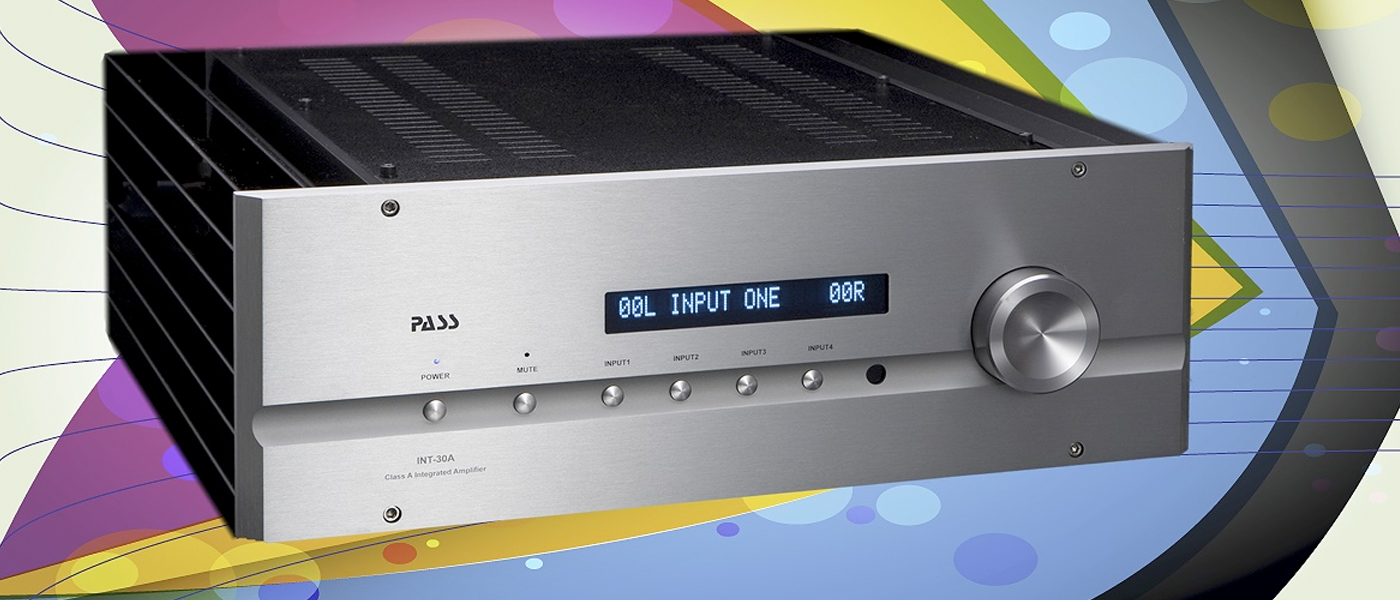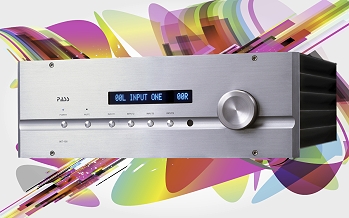Introduction
Pass Labs is renown for their high end preamplifiers and power amplifiers, but they also have integrated amplifiers as well, which include the INT-30A and the INT-150. Here, we review the INT-150, which, as you can imagine from the model number, outputs 150 watts x 2 (into 8 ohms). It has the same massive build quality as the other Pass components I have reviewed, and also, its own distinctive sound, as I have found with the others.
SPECIFICATIONS
- Design: Integrated Stereo Amplifier
- Power: 150 Watts RMS x 2 into 8 Ohms, 300 Watts RMS x 2 into 4 Ohms
- Input Impedance: 36 kOhms Unbalanced, 16 kOhms Balanced
- Class A Output: 10 Watts
- Dimensions: 7″ H x 19″ W x 19″ D
- Weight: 60 pounds
- MSRP: $7,150 USD
- Pass Labs
- Tags: Pass Labs, Integrated Amplifiers, Amplifiers, Audio, Stereo
The Design
The INT-150’s preamplifier section has an input relay selector that routes the signal to an analog volume control, and this feeds a Class A FET unity gain buffer. The output of this buffer goes to the preamp output stage and, from there, to the power amplifier section.
The front panel has a horizontal row of buttons, the first of which is the power on/off, and the rest are for selecting the input. The volume is read in 0.5 units, up to 63, so it is a relative scale, not dBV.
The rear panel has, from left to right, a set of preamp outputs, which includes both RCA unbalanced and XLR balanced. To the right of the pre-outs are the inputs, with four sets of unbalanced RCA jacks, and two sets of balanced XLR jacks. The AC receptacle is three-pin grounded. The main power on/off toggle is next to the receptacle. So, when it is on, the front on/off button serves as standby and power on. The speaker binding posts are really intended for cables with spade terminations, as the rear end of the binding posts are blocked with plastic plugs. Note that there are U-shaped jumpers that short two of the pins in the XLR input jacks. These have to be there if you use the RCA inputs. For balanced use, simply pull the pins out and put them in a safe place.
The remote control is very nice, with a brushed aluminum appearance, and all the basic controls that you need, including pass through for use with an SSP. This remote is used with several Pass Labs products, so a couple of the buttons are not functional with the INT-150.
In Use
I tested the INT-150 using an OPPO BDP-95 universal player and a variety of speakers that I had in the lab at the time, including full range floor-standers, and also some bookshelf speakers. Cables were Wireworld and Emotiva.
The Pass delivers a romantically warm sound. Just a smidgen to the left of neutral, skimming into delicious.
I picture it being in a den on a shelf under an end table with a disc player, and some nice bookshelf speakers on stands at either end of a well-used leather couch. There is a fireplace about 8 feet from, and directly facing the couch, and the speakers are toed in midway between the couch and the fireplace. There is a shag throw rug on the floor in front of the couch, and an old oak coffee table is on the rug.
A young couple moves the table off the rug, and are sitting on the rug snuggling, with a bottle of Chenin Blanc nearby and two glasses. The music is Romantic Piano, in three volumes. He pours the chilled wine, until both glasses are half-full. As he turns to place the bottle on the shelf next to the INT-150, she notices his chiseled torso and the shadow of dark whiskers on his face that no close shave can hide.

She puts down her glass, places a finger on his lips, slides her hand downward, and begins to unbutton his shirt.

She twirls the dark hair on his chest and tilts her head, moist lips parting, inviting him into her world.

Sorry, the phone is ringing. I’ll get back to the review in a moment.
. . . .
. . . .
. . . .
OK, I was talking about something I was imagining while listening to the INT-150, but I lost my train of thought. Oh, well . . . .
Warmth, clarity, detail, dynamic range, beautiful chassis (both the INT-150 and the girl), plenty of power, but perfect for an evening of relaxation. Anything else? Yeah, it’s the best integrated amplifier I have ever listened to.
On the Bench
All distortion measurements were made within an 80 kHz bandwidth. The load was 8 ohms unless otherwise specified. The XLR inputs were used for the test signals. The Volume setting was 50 unless otherwise specified.
At 1 kHz and 5 volts output, distortion was only 0.007%.
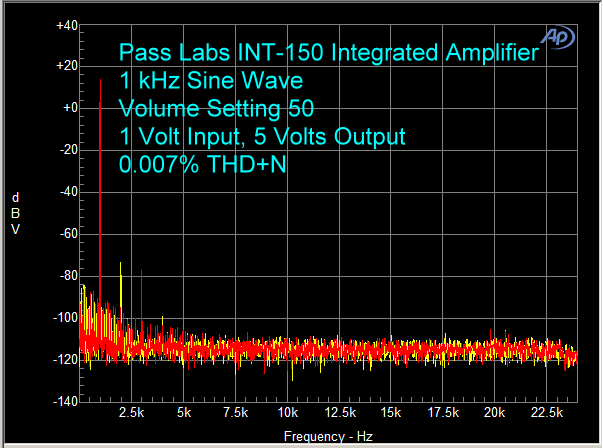
At 10 volts output, distortion rose just a bit.

At 20 volts output (50 watts into 8 ohms), distortion was 0.02%. The INT-150 does not use global negative feedback, so a rise in distortion is not unexpected. It was not audible in any case.
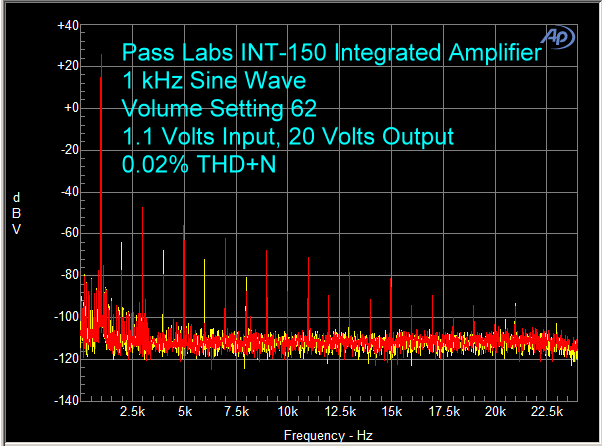
Using 19 kHz and 20 kHz sine waves, and 10 volts output, the B-A peak at 1 kHz was 87 dB below the fundamentals.
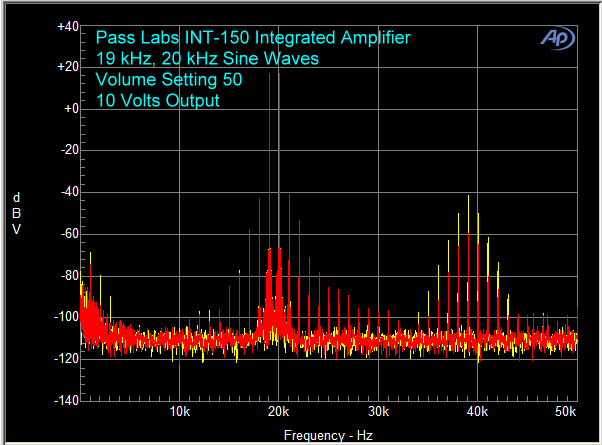
IMD at 10 volts output was 0.05%.
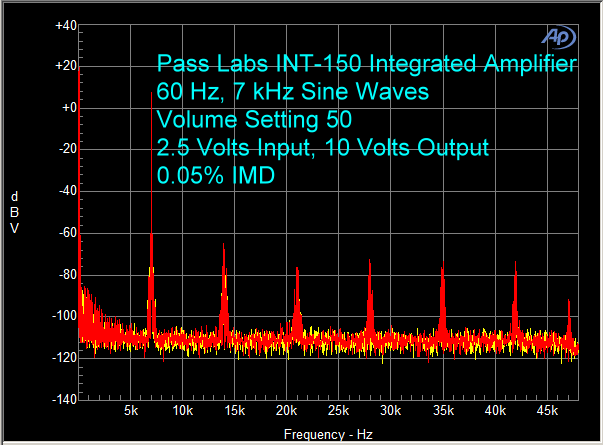
THD+N vs. Frequency is shown below. This was measured with the volume control set at its maximum value of 63. The lower lines are at 8 ohms, and the upper ones are with a 4 ohm load.
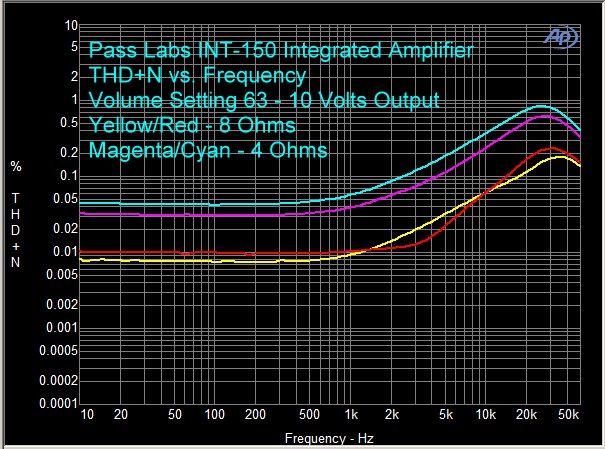
Maximum output at 8 ohms was 150 watts at 0.1% THD+N, and clipping (1% THD+N) at 175 watts.
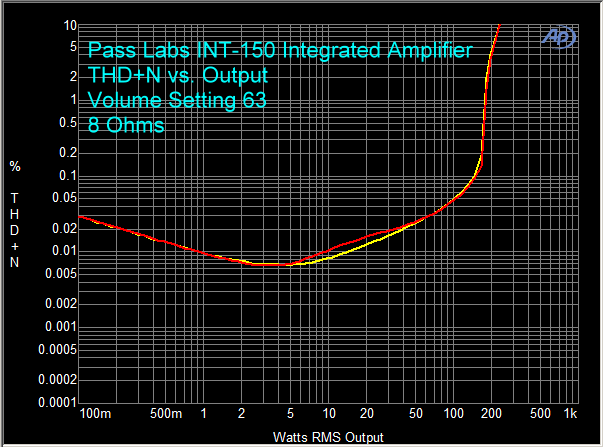
With a 4 ohm load, maximum output was 225 watts at 0.1% THD+N and clipping at 260 watts (the wall AC voltage dropped to 113 volts, so if you have a power conditioner that regulates the voltage, and maintains 120 volts, the maximum output from the INT-150 with a 4 ohm load would be about 300 watts.
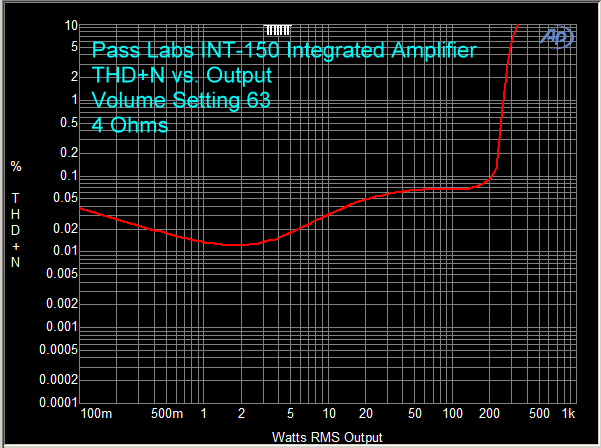
The measured frequency response was nearly the same at 8 ohms and 4 ohms, with the response being 10 Hz – 50 kHz, – 2 dB.
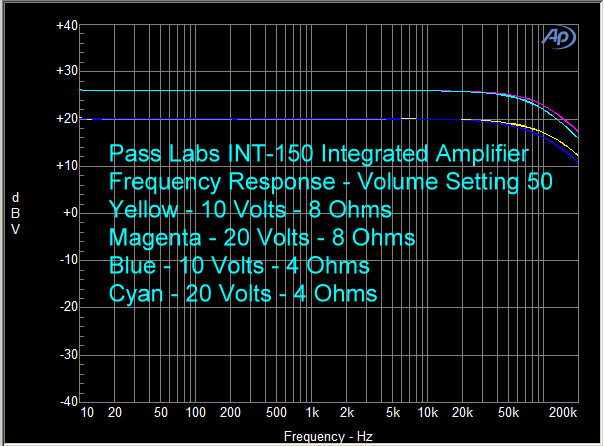
Conclusions
The INT-150 is a superb stereo integrated amplifier. Its build quality, luxurious appearance, and warm sound make it ideal for anyone’s den or other small room environment. Other member of the couple on the rug, wine, and fireplace not included.


